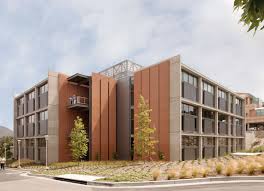Senate Bill 21, which requests $15 million in state funding for UCR’s School of Medicine, received unanimous, bipartisan accreditation at the Senate Education Committee last Wednesday, April 17. The bill is now being passed unto the Appropriation Committee for a comprehensive review and analysis before it can be voted on.
State funding of the School of Medicine is critical for addressing Inland Empire’s physician shortage, said Senator Richard D. Roth (D-Riverside), the author and primary advocator of the bill.
According to the California HealthCare Foundation, Inland Southern California is currently facing severe primary care physician and pre-med student outsourcing, as California has very limited medical school seats per capita. For every 100,000 people, only 17 medical school seats are available, which is far less than the national average of 32 seats.
Therefore, in addition to building the medical school, UCR is also working with various community partners, hospitals and medical clinic groups to build a new residency program in the Inland Empire.
“Much of the determining factor of where a physician will ultimately practice is where that physician finishes his medical training. So we’re investing in the residency training program to keep the physician here where we need them,” says Kathy Barton, Executive Director of UCR School of Medicine.
Prior to receiving the $15 million state funding, UCR School of Medicine Dean G. Richard Olds acquired $10 million in funding per year for 10 years from local and community contribution for the general start-up cost. “The community stepped forward in an enormous way,” said Barton.
In the earlier stage of opening up the medical school, the $15 million will go toward building the educational platform, which largely involves hiring the clinical faculties who will be administering the residency program of the third- and fourth-year students. Furthermore, faculties will provide patient care and temporary relief to the physician shortage to sustain the supply of physicians in addition to educating students.
“This summer we’re starting our first residency program,” said Barton. “We’re ramping up the first residency program right away so that by the time this first class graduates, we will have as many residency slots available to them as possible.”
The school will be putting heavy emphasis on the primary care medical specialty program, which directly addresses the physician shortage crisis in the Inland Empire. Three other medical specialties—general surgery, OB/GYN and psychiatry—that are also in short supply will also be emphasized in the programs.
The school will receive its inaugural class of fifty students on Aug. 9, 2013, half of which were selected from the UCR pre-med undergraduate population. The admission openings are likely to expand in the coming years.
“For our medical school to receive full funding by the state is very inspiring for students who want to pursue careers in health care,” said Elizabeth Koo, second-year pre-med student. “It’s going to be a great booster for our school’s prestige, as more students would now want to come to UCR for the medical school.”
Before the establishment of UCR’s medical school in 2012, students who wished to participate in the Thomas Haider program would be required to transfer to UCLA to complete the third and fourth year of medical school. Now, however, with the addition of the new medical school, the Thomas Haider program will still continue its same curriculum, but the process of transferring to another school will be entirely avoided.
Besides training physicians and sustaining the physician supply, Senator Roth envisions that in the long run the UCR School of Medicine will have a positive economic impact on the Inland Empire.









